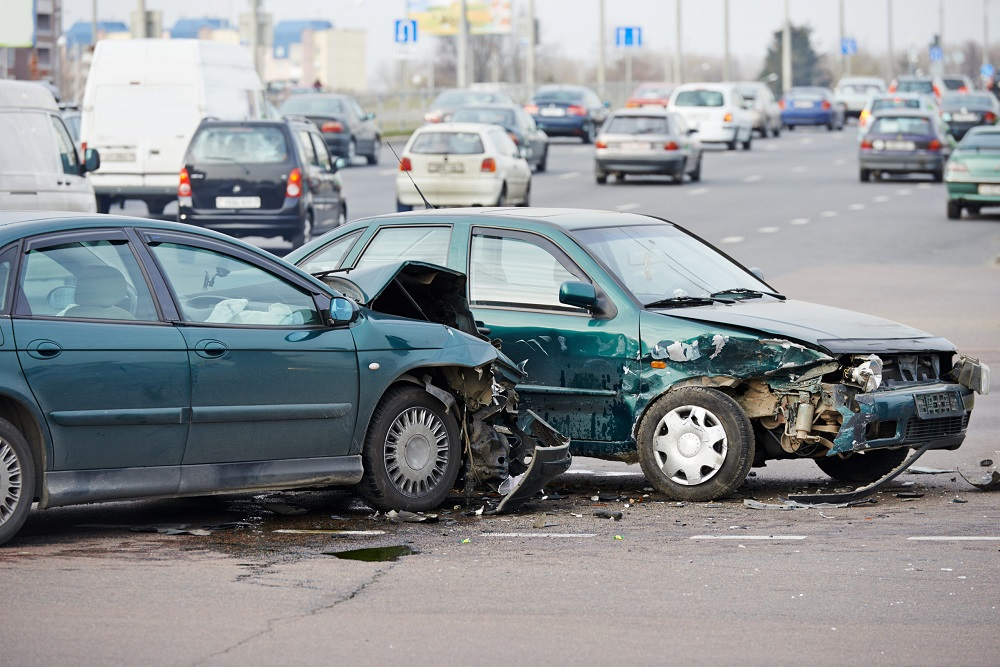A T-bone accident can be extremely harmful to everyone involved. It is one of the deadliest types of accidents in Birmingham. As a survivor, it is important to protect your rights during the T-bone accident claims process. Whether you were in the vehicle that struck the side of another car or someone else hit you, the law may entitle you to compensation for your damages. Assigning fault for a T-bone accident can be difficult, however. If you need assistance with a T-bone accident insurance claim, contact a Birmingham accident attorney.
What Is A T-bone Accident?
A T-bone accident is a side-impact or broadside vehicle collision. When the front of one vehicle strikes the side of another, the two vehicles form a ‘T’ shape. Broadsiding a vehicle can cause catastrophic injuries to all vehicle occupants. Liability or fault is not always immediately clear in a T-bone accident.
Although most people assume the driver that struck the side of another person’s car will automatically bear fault, this is not the case. That driver may not be at fault if the other driver snaked in front of him or her. For example, if Driver A made a left-hand turn in front of oncoming Driver B when it was not safe to do so, Driver B could strike the passenger side of Driver A’s car. Driver A, however, would be the one at fault for failing to yield the right-of-way to Driver B.
Determining fault in a T-bone accident may take an investigation from the police. The police can assess the scene of the crash, take photographs, interview witnesses, reconstruct the collision and take other measures to understand exactly how the crash happened. From there, the police can confirm the identity of the at-fault party. A car accident lawyer could also help a victim determine fault for a T-bone crash.
What Type Of Injury Is Commonly Associated With T-bone Accidents?
Most of the force in a T-bone collision imparts into the vehicle that gets hit. In some cases, this vehicle spins off course and collides with other vehicles. The injuries sustained in a T-bone collision will depend on several factors, including the speeds of both vehicles, angle of the impact, whether the passengers were using seat belts and the types of vehicles. A common injury in a T-bone accident, however, is a traumatic brain injury. A victim’s head may hit the window inside the struck vehicle, causing a skull, head or brain injuries. Other common T-bone accident injuries include broken bones, chest and lung injuries, internal organ damage, and face injuries.
T-bone Accident Statistics
According to the National Highway Safety Administration, about 8,000 people die in T-bone or side-impact collisions every year. Thousands of others suffer serious, life-changing injuries in T-bone crashes. T-bone accidents have higher serious and fatal injury rates than other types of crashes. Occupants seated on the same side of the crash are more likely to suffer severe or fatal injuries than occupants on the other side of the vehicle. Unrestrained occupants are almost six times more likely to suffer severe or fatal injuries in a T-bone collision than restrained occupants.
How Do T-bone Accidents Happen?
T-bone accidents happen most often at intersections. They are typically preventable. A side-impact can occur when one or both involved parties are not paying adequate attention to the road or breaking a roadway rule. A distracted, drowsy or drunk driver could negligently collide with the side of another vehicle.
Speeding and red-light running are also common crimes that cause T-bone accidents. A driver’s recklessness or carelessness could lead to one vehicle running into the side of another. When this happens, the party most at fault for causing the T-bone accident will be financially responsible for damages. An injured victim may need a lawyer’s assistance to determine fault and obtain compensation for a T-bone collision.

